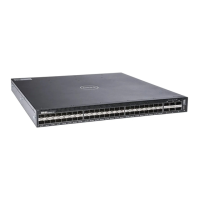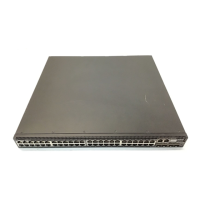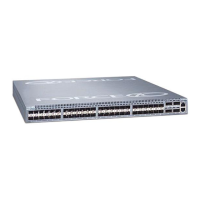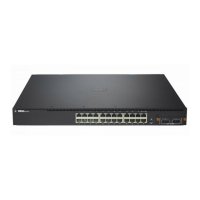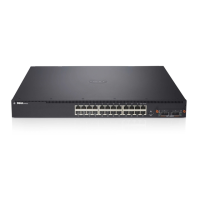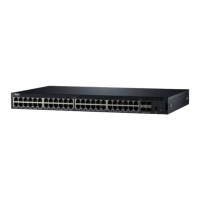Connecting Two S5000 Systems
To provide backup connectivity and increased data transfer between the systems, Dell Networking recommends
inserting an additional cable between the two units, in a second stacking port.
You can use any of the SFP+ or QSFP+ ports for stacking, provided it is configured as a stacking port.
CAUTION: The S5000 does not require special stacking cables. The cables used to connect 10GbE and 40GbE data
ports are sufficient.
NOTE: The port numbers in the following procedure are examples only.
1. Insert one end of the first cable into stack port 60 in chassis 1 (bottom).
2. Insert the other end of the same cable into stack port 60 on chassis 2 (top).
3. Insert a second cable into stack port 56 on chassis 2 (top).
4. Insert the other end of the second cable into stack port 56 on chassis 1 (bottom).
Figure 25. Two S5000 Systems Connected in a Ring
Connecting Three S5000 Systems
To provide backup connectivity and increased data transfer between the systems, Dell Networking recommends
inserting an additional cable between the two units, in a second stacking port.
CAUTION: The S5000 does not require special stacking cables. The cables used to connect 10GbE and 40GbE data
ports are sufficient.
NOTE: The port numbers in the following procedure are used as examples only.
1. Insert one end of the first cable into stack port 60 of chassis 1 (bottom).
2. Insert the other end of the cable into stack port 56 of chassis 2 (center).
40
